
The City Detective
An interview with Japanese architect Yoshiharu Tsukamoto
28/06/2017
Japanese architect Yoshiharu Tsukamoto and Momoyo Kaijimaa, his partner in both life and in their architectural firm Atelier Bow-Wow, are often called “city detectives”. Like sleuths, they follow the trail of Tokyo architecture that usually isn’t mentioned in travel guides. Sometimes they find interesting and unusual structures that people have built themselves on so-called urban “land scraps” on which nothing sensible or permanent can be built. These sorts of buildings Tsukamoto has collected in his books Made in Tokyo and Pet Architecture Guide Book. The latter highlights super tiny structures that the architect calls “pets” because they are just as lovable and intriguing as lap dogs. Likewise, the first projects of Atelier Bow-Wow were also quite small and found solutions to building structures in places where it was practically impossible to build anything at all. It should be rightfully mentioned that the architects also do work on physically larger projects, most of which are found in Europe and the US.
Tsukamoto is usually grouped together with the most famous of Japan’s generation of architects who are currently in mid-life (Kazuyo Sejima and Rjue Nishizawa from SANAA), yet their differences are always noted, for Tsukamoto does not aestheticize architecture – he makes it inhabitable. He is also called one of the most intellectual of Japan’s architects, as his ruthless and prepared approach to modern architecture could be compared to the theoretical work of Rem Koolhaas. Tsukamoto received his education at the Tokyo Institute of Technology, and has been a visiting scholar at Harvard and The Royal Danish Academy of Fine Arts (School of Architecture), among others, and has been a guest lecturer at several of the world’s most prestigious architectural schools. Now, however, he seems to have moved his cross-hairs off of cities and onto socially relevant projects. Tsukamoto believes that in the 21st century, progress does not mean more and faster; it means quality cooperation and relationships among various fields. Among the more recent projects done by Aterlier Bow-Wow is the rebuilding of the neighborhoods that suffered from the 2011 tsunami.
Tsukamoto was also a member of the international panel of judges for the Latvian Architecture Award, and his presence was possible thanks to the Embassy of Latvia in Japan. The following conversation with Yoshiharu Tsukamoto took place at the Latvian Association of Architects, immediately after the meeting of the international panel of judges for the Latvian Architecture Award at which it was decided which nominees would receive awards for recognition and the Grand Prix (The Golden Pineapple).
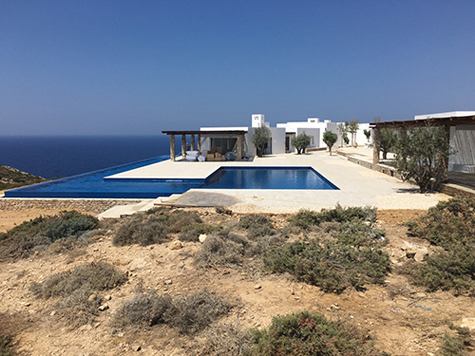
Treehouse. Antiparos. 2016. Atelier Bow-Wow in collaboration with Dionysis Zacharias Architects. Photo: oliaros. © Atelier Bow-Wow
What is your impression of Latvian architecture?
I have a good feeling. Your architecture is very diverse, but I was especially impressed by the trip to Ludza together with the architect Pēteris Blūms and the restoration project for the Great Synagogue in this town. It’s good that architecture is being made in Latvia with such excitement and a very conscious selection of solutions. I believe that Latvia has a wonderful cultural and historical background on which to create good architecture.
You yourself study so-called “daily” and unofficial architecture, which rarely shows up among the nominees for awards, or as actual winners.
Yes, I didn’t get to go into any buildings in Latvia where one can sense daily life, but I would have gladly seen some normal houses and not just the best of the best. Similarly, the projects submitted for the Latvian Architecture Award also consisted of mostly exceptional-situation architecture – one of the private homes was for a very wealthy person, while the other one, which was more affordable from a financial standpoint, didn’t have a finished interior, which is why I couldn’t get a sense of life in the building.
Latvia’s architects submit projects for the award that aren’t completely finished yet because they’re afraid that after moving in, the inhabitants will ruin what the architect had envisioned.
The points where the architect and the final inhabitants converge are very interesting to me. Especially in private architecture, the border between the spheres of competence of the inhabitant and the architect is nonetheless difficult to draw. We architects are inspired not only by location, time, and fashion, but also by clients whose wishes and thought processes are not always easy to understand. In addition, the clients are not completely free in their choices either. Society indirectly influences those choices in various ways – in terms of social conditions, the social background, education, material procurement, and the accessibility of construction technology and local resources. Many of these factors cannot be influenced or chosen by the client. Therefore, there are many limits on both sides. The more time an architect spends speaking to a client, the better he or she understands that many of the reasons behind the client’s wishes are rational choices. This sometimes dampens the architect’s inspiration and tests the architect’s talent and abilities, which is why private architecture is placed in a position where it is much criticized. I think it is essential to analyze and talk about domestic and daily architecture.
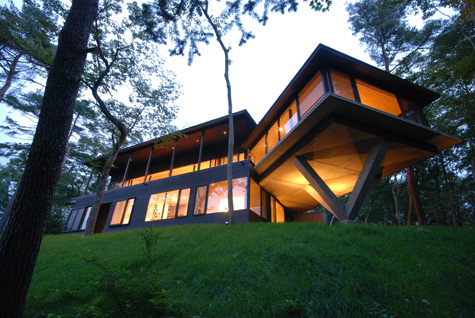
House Plateau. Nagano. 2015. Atelier Bow-Wow. Photo: Atelier Bow-Wow. © Atelier Bow-Wow
In the documentary film Architecture: A Challenge to Japanese Society, Tadao Ando, who began his career by designing private homes, laments that they are not taken seriously because they are looked upon as B-category architecture.
I think that architects cleave into two parts here. Architects for whom the creative aspect is important in their work really like private architecture; but those for whom architecture is an instrument of power, private homes don’t seem important enough for them. In my opinion, one point of view looks upon private architecture as belonging to the B-category, but from another viewpoint, it is certainly hierarchically superior architecture. Yet the public is usually very interested in private houses. They feel closer to them, and they comprehend the architecture of private homes better than that of, for instance, institutions or public buildings. But speaking about Tadao Ando, he speaks from his position and wants to protect himself from critique. Ando is being a bit hypocritical because he himself is very respected in Japan. One shouldn’t believe every word he says.
For the neighborhoods that suffered damage from the 2011 tsunami, you created projects for private homes which the owners could then expand upon over time. Chilean architect Alejandro Aravena has similar projects. These sorts of projects, where the architect invites the owners to participate in the creating of the house, are a sign of our times, right?
Yes. I believe that several problems can be solved in this way. The thing is, the industrialization of the 20th century took away people’s skills and opportunities to build their own homes. The construction industry took over, and it certainly had a huge role after WWII, when we had an extreme shortage of living space. The mass production of houses, industrialization, and standardization were very important back then. After WWII, Japan had to build approximately 2.2 million homes very quickly; and by 1974 it was done. That means that it took about 20 years to build what was essential. The plan was completed, but at this point, the home construction industry cannot be stopped. To make money and stay afloat, it must continue building. That’s business. And that’s how the industry’s manipulations with people’s needs, or in truth – what they perceive as needs – began. A second wave of industrialization came over the country. The first time, industrialization was welcome and fulfilled society’s needs, but by the second time it had lost its former image, and was itself creating new, supposed needs that supported people’s weaknesses. The situation is complex because industrialization began to manipulate people and became unhealthy in its implementation. I think that in the 21st century, we’re completely exhausted from industrialization ruling over us. Governments have also always initiated laws and regulations that encourage and help cover up the activities of the construction industry. People end up paying for all of it. We have limited access to resources and skills because industry has taken over all of it. To access them, we have to pay the industry. People feel disconnected from the world in this way. That’s one of the reasons why today’s society feels unhappy. What we, architects, can do in this situation is return to the people the opportunity to build, at least partially, their own house.
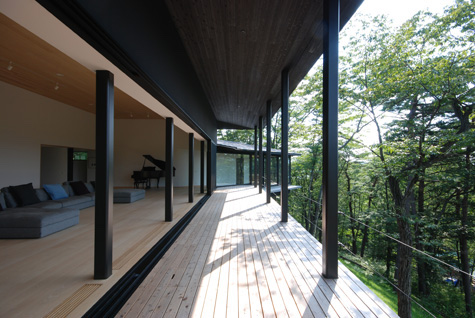
House Plateau. Nagano. 2015. Atelier Bow-Wow. Photo: Atelier Bow-Wow. © Atelier Bow-Wow
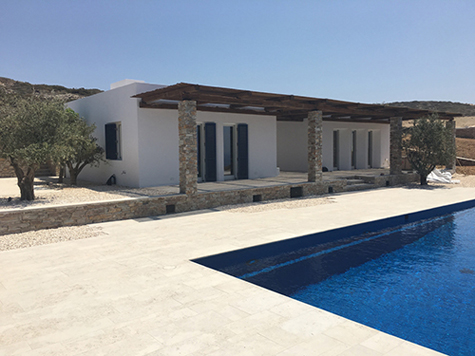
House Plateau. Nagano. 2015. Atelier Bow-Wow. Photo: Atelier Bow-Wow. © Atelier Bow-Wow
Japan has had to start from the beginning several times – after WWII, after the 2011 tsunami – which Rem Koolhaas and Hans Ulrich Obrist called “tabula rasa situations” in their book Project Japan: Metabolism Talks.
Those actually weren’t tabula rasa (“blank slate”) situations. Culture has vitality and survives even after seemingly complete destruction. We each have our own background and traditions which cannot be easily swept off of the face of the earth, like buildings. Yet, especially the WWII-created emptiness and destruction allowed for the creation of new industrial methods with which to build new cities and to create homes with more comfortable domestic living conditions. Emptiness gives room for production; it encourages industrial growth. As a result, in Tokyo, for instance, only zoning and high fire safety standards are regulated; planning regulations do not stipulate the relationships between buildings. The city has totally forgotten about these things because we lost everything during the war.
From today’s viewpoint, is that a loss or a gain for the city?
I think that in the 20th century that was a gain, and the reason why so many Western architects admired Tokyo and looked at it as an experimental laboratory. But today, this sort of urban planning and construction method has reached its ceiling. We don’t know in what direction to go now, and that’s a problem because we’re becoming very fragile and vulnerable in terms of, for example, the economy that influences the city’s development. If we had some sort of a corresponding cultural canon with which to maintain the city, then we could oppose these economic forces more courageously. Since we don’t have these kinds of canons, it is very easy for investors to make money in Tokyo simply by tearing down what has been built and putting something new in its place.
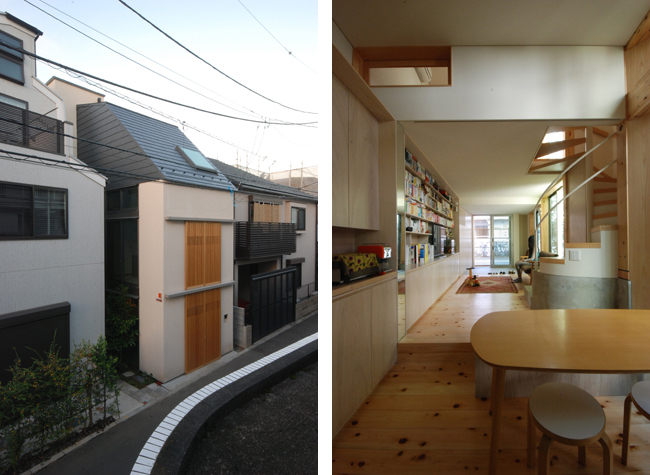
Roji Machiya. Tokyo. 2014. Atelier Bow-Wow. Photo: Atelier Bow-Wow. © Atelier Bow-Wow
You’ve said that one aspect that separates today’s architecture from that of the 20th century is that current architects accept the situation of cities as “being what they are”. Whereas in the 20th century, architects focused most of their efforts on what cities “should be like”.
Today, cities have become more tangible. In the Japan of the 1950s and 60s, a city was the future that was being built. In this situation, cities were ideological objectives. Today’s cities are here, around us; they are tangible and real. The reflection of all of society can be seen in them. Architecture’s relationship with the city is also changing; we begin not with an ideological objective, but with real things that must be solved – social discrepancies, social mechanisms that create the environment. If the whole thing is unhealthy, it can be changed by starting with fully concrete things.
Is that why you’re interested in the so-called “small architecture”?
Yes. The small is the real and tangible aspect of the city. But look at the kinds of cooperation models and network-like structures that stand behind it. Then it turns out that the small is not so small. The discussion spreads beyond the notion of size. It no longer has meaning. Yes, it is important to me that the small has no bounds.
Have the subjects of interest that you study changed over time?
Yes, I used to be more interested in the unusual and strange things in cities. I was interested in turning architecture back towards the person, towards intelligible scales and buildings in Tokyo. The small and the unusual were good reasons to say that architecture is on the people’s side. It may not always be beautiful or valuable in a cultural sense, but it’s on the side of the people. It helps us stay in a place. I tried to make these strange structures valuable. I continue to study cities and architecture, but right now I’m more interested in the past and the forces...the background that is behind these buildings and which explains why they are possible and why they are built. I’m interested in societal models and structures.
This sort of architecture is beyond judgments of beauty or ugliness. Is the aesthetic aspect even important to you?
I think that beauty can also be found in web-like structures. I believe that beauty is everywhere, but we can either allow it or forbid it to squeeze through and show itself. Of course, I also like beautiful architecture in the sense that most people understand it. I wouldn’t want to be a denier or destroyer of it. But I’m not interested in beautiful buildings that ignore other architectural aspects. Yes, I’ve always highly valued beautiful buildings that carry something much more along with them. I believe that design and architecture are the ability and the skills to find balance between many and various aspects. And what is most beautiful is when this balance is achieved. But there is beautiful architecture that is pretty just from an individual viewpoint; when taking a broader look, it becomes altogether ugly. I think that the media pays too much attention to buildings that are beautiful in this way. But that’s the part of the industry which also includes the media. This sort of architecture feeds the media, but I don’t condone it.
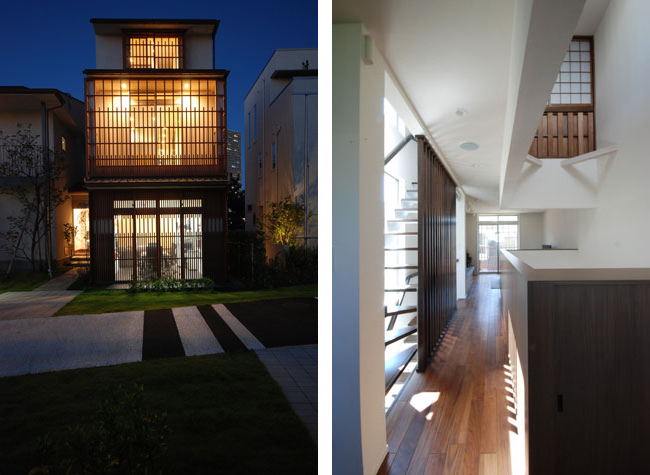
Tama Machiya. Tokyo. 2013. Atelier Bow-Wow. Photo: Atelier Bow-Wow. © Atelier Bow-Wow. Laureate of Good Design Award 2013
Rem Koolhaas’s AMO, an offshoot spatial agency from his architectural office OMA, has the motto: If at all possible, don’t build it. It seems that your position is similar – that before something is built, it would be good to think twice about it really being necessary and if it’s worth it.
Yes, I believe that the most important job for today’s architects is the monitoring of construction. If we really think about the planet’s sustainability, then it would be essential to control the scale of construction. We don’t set a limit on how many buildings can be built in a year, but in commercial fishing, there are limits to how many fish they can catch in a year. There, the quota system is very rigid. There aren’t any limits like this in construction because no one has devised a theoretical rationale that would authorize the idea for a quota system in construction. The world has never been in a situation where the intensity of construction is threatening its survival, and that construction should be restricted. Not a single school of architectural theory has looked at the case that building less would be an architectural benefit. I am trying to change this situation by theoretically explaining the need for this.
Your office also publishes books on studies and on architectural theory. How important for you is this aspect of architectural theory?
I work at a university and architectural studies are a part of my job. Together with the students, we posit a theory, discuss it, and try to define it. When that’s done, we publish a book. But as soon as one theory is understood and defined, we see the opportunity for a new theory to arise, which again has to be studied and defined. My publications are a chain of these kinds of theories in which each link arises from the previous one. This process is very important to me because an architect is not only a drawer-doer, but also a thinker. Of course, we gain knowledge from historical experience, but we also learn and comprehend something from creating real-life projects, and it is crucial to be able to theoretically substantiate it. From this aspect, I believe that the work of an architect is very interesting. Otto Bismarck said that the wise learn from history, while fools learn from their own experiences. In my opinion, architects must learn from both history and their own experiences.
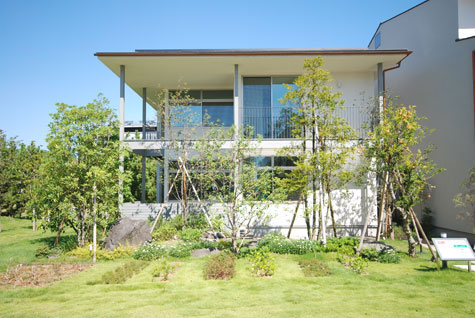
Tama Loggia. Tokyo. 2013. Atelier Bow-Wow + TamaHome. Photo: Atelier Bow-Wow. © Atelier Bow-Wow. Laureate of Good Design Award 2013
Speaking of experience, you said in your lecture that people must have certain skills and experience in using public spaces.
Yes. Any open space in the city cannot be seen as being public. It only becomes public when people use it. For instance, in the 1950s and 60s, many Japanese cities built new town halls in the hope that these local government buildings would strengthen and represent democracy. They usually constructed squares in front of these town halls, but no one went there because no one knew how one should behave in front of a town hall. There were no cafes, shops or other points of interest that would attract people. In Japan, people perceive public space as a linear unit in which to travel from point A to point B, without stopping, without lingering or assembling.
One of the most dangerous trends is that an increasing number of semi-public spaces popping up in cities are actually private, and they are maintained for commercial purposes.
Yes, that absolutely applies to Tokyo’s Shibuya District, where almost everything is a quasi-public space. The saddest part is that the young people think it’s a public environment. There, the boundary between the private and the public is dictated by commerce. I think that in the beginning, people maintained public spaces themselves and felt responsible for them; gradually, commerce has taken over and changed habits. Private owners maintain it and make us pay for it, and we aren’t responsible for anything there. In this sense, I’m pessimistic because in this case, people are prohibited from having the chance to grow as individuals and to take responsibility for something; people forget to think of others. Public space is an issue of ethics and morals, not a commercial benefit. It’s very simple – if we don’t have the opportunity to grow as individuals and take on responsibility, then there won’t be anything productive about the future.
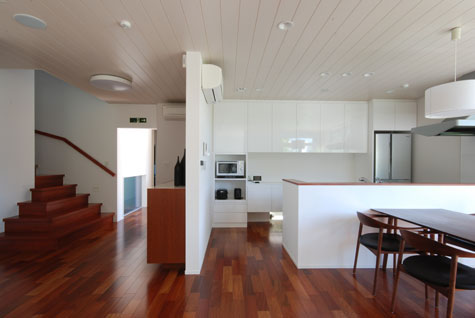
Tama Loggia. Tokyo. 2013. Atelier Bow-Wow + TamaHome. Photo: Atelier Bow-Wow. © Atelier Bow-Wow. Laureate of Good Design Award 2013
 Material produced with the support of the State Culture Capital Foundation of Latvia
Material produced with the support of the State Culture Capital Foundation of Latvia